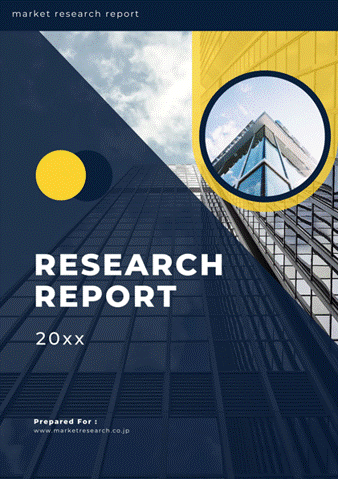 | • レポートコード:D0-MOR-AP0445 • 出版社/出版日:Mordor Intelligence / 2020年4月20日 • レポート形態:英文、PDF、90ページ • 納品方法:Eメール(受注後2-3営業日) • 産業分類:食品&飲料 |
| Single User | ¥629,000 (USD4,250) | ▷ お問い合わせ |
| Team User | ¥703,000 (USD4,750) | ▷ お問い合わせ |
| Corporate License | ¥1,110,000 (USD7,500) | ▷ お問い合わせ |
• お支払方法:銀行振込(納品後、ご請求書送付)
レポート概要
| 本調査レポートは、食品抗菌添加剤の世界市場について調査・分析した資料で、食品抗菌添加剤の市場概要、動向、セグメント別市場規模、地域別分析、競争状況、企業情報、市場機会分析などで構成されています。 |
The global food antimicrobial additives market is growing at a CAGR of 7.3% during the forecast period (2020 – 2025).
– The market is mainly driven by its extensive use in the food and beverage sector as preservatives to prevent microbial contamination and rising consumer awareness regarding health-related maladies such as nosocomial infections and others. Also, the added benefits of these additives, such as enhancing the high dimensional stability, heat & chemical resistance, and chemical stability, further boost its usage in the food and beverage industries. Geographically, Asia-Pacific is the largest and the fastest-growing region in the global market, followed by Europe and North America. The Middle East & Africa is projected to be the second-fastest-growing region in the market.
– However stringent environmental regulations like the FDA for antimicrobial additives used directly in processed foods and food-contact substances such as food packaging products and fluctuating raw material costs are few of the factors which are expected to impede the market growth in the forecasted period.
Key Market Trends
Rising usage of antimicrobial additives in baked & confectionery products
The bakery and confectionery sector witnessed an upsurge trend in usage of antimicrobial additives owing to the preservative benefits it offers by resisting the growth of unwanted microorganisms in the processed food as the growth of these microorganisms on untreated particles causes discoloration, unpleasant odors, and polymer degradation issues. Antimicrobial components have different antimicrobial activity against the growth of various spoilage and poisoning microbes including spoilage causing bacteria, yeast, and mold, thus boosting the shelf life of the end product. In addition, some antimicrobial components exhibit an antioxidant effect, for example, cinnamon essential oil, echinacea extract, sourdough and calcium propionate, chamomile essential oil and carvacrol and thymol.
Asia Pacific is the largest and the fastest growing region in the global market
The Asia Pacific is the largest as well as the fastest-growing region in the global food antimicrobial additives market owing to the growing consumer awareness about health-related infections, rapid urbanization and growing population in the region. Countries driving the Asia Pacific region include China, Japan, and India where the sales of food and beverage products are increasing significantly. Also, growing food and beverage industries and the expansion of leading companies in the region has fueled market growth.
Competitive Landscape
The global market for food antimicrobial additives is consolidated, owing to the presence of a few large regional players in the global market. Emphasis is given on the merger, expansion, acquisition, and partnership of the companies along with new product development as strategic approaches adopted by the leading companies to boost their brand presence among consumers. Few of the leading players in the market include DuPont de Nemours, Inc, PolyOne Corporation and BioCote Limited to name a few.
Reasons to Purchase this report:
– The market estimate (ME) sheet in Excel format
– Report customization as per the client’s requirements
– 3 months of analyst support
1 INTRODUCTION
1.1 Study Deliverables
1.2 Study Assumptions
1.3 Scope of the Study
2 RESEARCH METHODOLOGY
3 EXECUTIVE SUMMARY
4 MARKET DYNAMICS
4.1 Market Drivers
4.2 Market Restraints
4.3 Porter’s Five Forces Analysis
4.3.1 Threat of New Entrants
4.3.2 Bargaining Power of Buyers/Consumers
4.3.3 Bargaining Power of Suppliers
4.3.4 Threat of Substitute Products
4.3.5 Intensity of Competitive Rivalry
5 MARKET SEGMENTATION
5.1 By Category
5.1.1 Natural
5.1.1.1 Organic
5.1.1.2 Conventional
5.1.2 Synthetic
5.2 By application
5.2.1 Bakery & Confectionery
5.2.2 Meat & Poultry
5.2.3 Dairy
5.2.4 Beverages
5.2.5 Others
5.3 Geography
5.3.1 North America
5.3.1.1 United States
5.3.1.2 Canada
5.3.1.3 Mexico
5.3.1.4 Rest of North America
5.3.2 Europe
5.3.2.1 Spain
5.3.2.2 United Kingdom
5.3.2.3 Germany
5.3.2.4 France
5.3.2.5 Italy
5.3.2.6 Russia
5.3.2.7 Rest of Europe
5.3.3 Asia Pacific
5.3.3.1 China
5.3.3.2 Japan
5.3.3.3 India
5.3.3.4 Australia
5.3.3.5 Rest of Asia-Pacific
5.3.4 South America
5.3.4.1 Brazil
5.3.4.2 Argentina
5.3.4.3 Rest of South America
5.3.5 Middle East and Africa
5.3.5.1 South Africa
5.3.5.2 Saudi Arabia
5.3.5.3 Rest of Middle East and Africa
6 COMPETITIVE LANDSCAPE
6.1 Most Active Companies
6.2 Most Adopted Strategies
6.3 Market Share Analysis
6.4 Company Profiles
6.4.1 DuPont de Nemours, Inc.
6.4.2 PolyOne Corporation
6.4.3 BioCote Limited
6.4.4 NanoBioMatters Industries S.L
6.4.5 RTP Company
6.4.6 Steritouch Ltd
7 MARKET OPPORTUNITIES AND FUTURE TRENDS